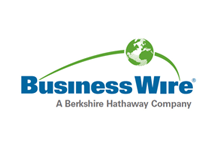Worldwide Analysis on the Malic Acid Market, 2019 to 2024: Projected to Grow from 81.2 Kilotons in 2018 to 102.8 Kilotons by 2024 - ResearchAndMarkets.com
The "Malic Acid Market: Global Industry Trends, Share, Size, Growth, Opportunity and Forecast 2019-2024" report has been added to ResearchAndMarkets.com's offering.
The global malic acid market reached a volume of 81.2 Kilotons in 2018. Looking forward, the global malic acid market is projected to reach a volume of 102.8 Kilotons by 2024, exhibiting a CAGR of around 4% during 2019-2024.
In recent years, the growing use of malic acid for manufacturing sugarless confectioneries has escalated its demand among obese and diabetic people. Moreover, regulatory authorities such as the US Food and Drug Administration (USFDA), European Food Safety Authority (EFSA) and Food Safety and Standards Authority of India (FSSAI) have approved the use of malic acid in food processing, thereby catalyzing its sales.
Malic acid is also utilized as a substitute for citric acid and tartaric acid in the detergent industry, owing to its lower hygroscopicity and higher solubility. Apart from this, it is used as an ingredient in many cosmetic and personal care products as it has antioxidant properties which make the skin healthy and shiny. In the pharmaceutical industry, malic acid is used in the production of medical products including cough syrups, throat lozenges, toothpaste, mouthwash and health supplements such as protein shakes and nutrition bars.
On the basis of applications, currently, beverages represent the largest application segment since malic acid is used as a preferred acidulent in this segment. Region-wise, Asia Pacific exhibits a clear dominance in the global malic acid market.
Key Questions Answered
- How has the global malic acid market performed so far and how will it perform in the coming years?
- What are the key regional markets in the global malic acid industry?
- What is the breakup of the global malic acid market on the basis of product type?
- What is the breakup of the global malic acid market on the basis of application?
- What are the various stages in the value chain of the global malic acid market?
- What are the key driving factors and challenges in the global malic acid market?
- What is the structure of the global malic acid market and who are the key players?
- What is the degree of competition in the global malic acid market?
- How is malic acid manufactured?
Topics Covered
1 Preface
2 Scope and Methodology
2.1 Objectives of the Study
2.2 Stakeholders
2.3 Data Sources
2.4 Market Estimation
2.5 Forecasting Methodology
3 Executive Summary
4 Introduction
4.1 Overview
4.2 Properties
4.3 Key Industry Trends
5 Global Malic Acid Market
5.1 Market Overview
5.2 Market Performance
5.3 Market Breakup by Product
5.4 Market Breakup by Application
5.5 Market Breakup by Region
5.6 Market Forecast
6 Market Breakup by Product
6.1 L-Malic Acid
6.2 D-Malic Acid
6.3 DL-Malic Acid
7 Market Breakup by Application
7.1 Beverages
7.2 Confectionery and Food
7.3 Personal Care
7.4 Others
8 Market Breakup by Region
8.1 Asia Pacific
8.2 North America
8.3 Europe
8.4 Middle East and Africa
8.5 Latin America
9 Global Malic Acid Industry: SWOT Analysis
9.1 Overview
9.2 Strengths
9.3 Weaknesses
9.4 Opportunities
9.5 Threats
10 Global Malic Acid Industry: Value Chain Analysis
10.1 Overview
10.2 Research and Development
10.3 Raw Material Procurement
10.4 Manufacturing
10.5 Marketing
10.6 Distribution
10.7 End-Use
11 Global Malic Acid Industry: Porters Five Forces Analysis
11.1 Overview
11.2 Bargaining Power of Buyers
11.3 Bargaining Power of Suppliers
11.4 Degree of Competition
11.5 Threat of New Entrants
11.6 Threat of Substitutes
12 Global Malic Acid Industry: Price Analysis
12.1 Price Indicators
12.2 Price Structure
12.3 Margin Analysis
13 Malic Acid Manufacturing Process
13.1 Product Overview
13.2 Raw Material Requirements
13.3 Manufacturing Process
13.4 Key Success and Risk Factors
14 Competitive Landscape
14.1 Market Structure
14.2 Key Players
14.3 Profiles of Key Players
14.3.1 Bartek
14.3.2 Changmao Biochem
14.3.3 Fuso Chemical Co. Ltd.
14.3.4 PolyNT
14.3.5 Thirumalai Chemicals
14.3.6 Anhui Sealong Biotechnology
14.3.7 Yongsan Chemicals
14.3.8 Miles Chemical
14.3.9 The Chemical Company
14.3.10 Spectrum Chemical
14.3.11 Isegen South Africa
14.3.12 Corbion
14.3.13 Mitsubishi Chemical
14.3.14 Tate & Lyle
14.3.15 Mubychem Group
For more information about this report visit https://www.researchandmarkets.com/research/tzjhbg/worldwide?w=4
View source version on businesswire.com: https://www.businesswire.com/news/home/20190228005412/en/





